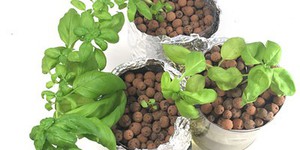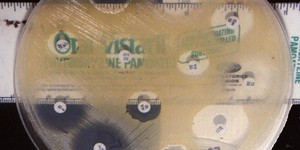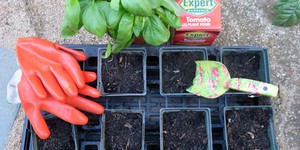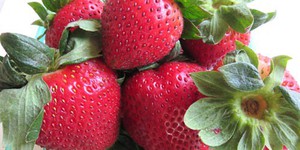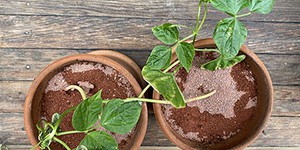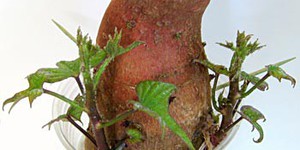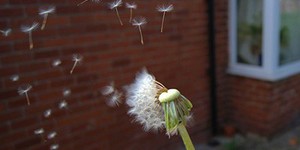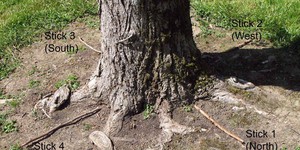Third Grade, Plant Biology Science Projects (20 results)
Plants provide us with so much — oxygen to breath, food to eat, materials to make clothing and paper, and beautiful flowers and leaves to admire! How can plants be so diverse and survive in so many kinds of climates? How do they know how to grow towards the sun? Why do some plants not have seeds? Explore the amazing and beautiful world of plants.
|
Select a resource
Sort by
|
What do plants need to grow? Most of us would answer that they need light, air, water, and soil. But by using a process called hydroponics, you can grow plants without soil! How does it work? Try this project and see for yourself!
Read more
Featured
Have you heard that garlic powder is supposed to inhibit the growth of bacteria? Which do you think would make a better disinfectant: a solution of garlic powder or a solution of bleach? This project shows you a straightforward way to compare the effectiveness of different disinfectants (or other antimicrobial agents), by measuring zones of inhibition on a culture plate.
Read more
Plants need nitrogen to grow healthy stems and leaves. Although nitrogen is the most abundant element in the air we breathe, that form of nitrogen cannot be used by plants. Nitrogen contained in fertilizer, on the other hand, is readily taken up by plants. In this experiment, you will compare plants grown without nitrogen fertilizer to plants grown with nitrogen fertilizer.
Read more
New
Have you ever noticed that on a hot day, it's more comfortable to wear a light-colored shirt than a dark one? Or that it's cooler in a park than walking down a street? This happens because different surfaces absorb and reflect heat in different ways. Urban heat islands are parts of cities where man-made surfaces like pavement and buildings replace natural surfaces like grass and trees. In this project, you will use temperature and satellite data to see if certain areas in a city have higher…
Read more
Fuzzy things are often cute, but not when that fuzziness is mold on your strawberry—yuck! Companies look for natural, plant-based ways to protect the berries from mold when they are in the store, waiting for you to purchase them. Would washing them in aloe vera juice protect strawberries from mold? Do this project and find out!
Read more
To be able to live on Mars, humans need breathable air, clean water, and nutritious food. Spacesuits can provide oxygen to breathe, ice on Mars can be a source of water, but how could we get nutritious food? Today's astronauts bring food with them. But a manned trip to Mars would require food that was either successfully grown in space or on Mars, as taking the extra weight of food for such a long time—it takes 6–9 months one way—is just too costly. In this project, you will…
Read more
You might not know it, but plants are able to sense their environment and actually respond appropriately. One of the key parameters that every plant must respond to is the direction of gravity: stems go up (opposite to the pull of gravity) and roots go down (in the same direction as the force of gravity). In this project, you will construct simple devices that hold several germinating seeds, which allow you to watch how growing rootlets respond as you rotate the devices, effectively altering…
Read more
New
Engineers are trying to tackle the world's ocean pollution problem using robots. Some robots, like Mr. Trash Wheel and the ship featured in this Mark Rober video, are stationary and collect trash as it flows out of rivers before it gets into the ocean. Others, like the Jellyfishbot, are mobile and can squeeze into narrower spaces to collect trash:
Can you build and test your own trash-skimming robot? If you do not have access to a natural body of water to test it in, you can use a bathtub or a…
Read more
Have you ever enjoyed eating a tasty sweet potato? They can be served as yummy mashed sweet potatoes with melted butter, turned into golden-brown sweet potato fries, or prepared in many other scrumptious ways. Did you know that you can make a sweet potato grow into a sweet potato plant, and grow several sweet potatoes this way? In this science project, you will grow your own sweet potato plants and investigate what part of the sweet potatoes is needed to grow the plants.
Read more
Up, up, and away! If you have ever made a wish and blown the fluff of a dandelion, you have witnessed how some plants are adapted to spreading their seeds using the wind. The tiny, furry parachute allows the seeds to be picked up by the wind and to be carried far away from their parent plant. In this experiment, you will make models of seeds and fruit to investigate dispersal by wind and to evaluate
the relationship between the structure of the seed and its ability to be dispersed by the…
Read more
Like humans, plants can be negatively affected by overcrowding. Unlike humans, plants cannot get up and move to a new environment or explore how to utilize new resources. This experiment will explore the effects of crowding (population density) on the growth and health of plants.
Read more
Have you ever gone camping, looked up at the stars, and found the Big Dipper? Two stars in the dipper part of this constellation point to Polaris, the north star, which people have used for thousands of years to help them find their way. In this plant biology science fair project, you'll investigate whether plants, like moss, can help you find your way, too.
Read more
We all know that plants need sunlight and water to grow big and tall. But did you know that inside seeds are baby plants, and that the fragile baby plant inside the seed needs to be protected? If you've ever had a sunburn, you also know that the sun gives off harmful radiation and heat. How much radiation and heat can a seed handle? Find out using some radish seeds, an oven, and your microwave!
Read more
|
Explore Our Science Videos
Strawberry DNA Extraction
Delayed Release Pill Challenge
Build an Infinity Mirror | Science Project



